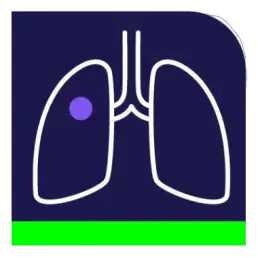Lung-RADS Calculator v. 2022
A quality assurance tool designed by the American College of Radiology (ACR) to standardize lung cancer screening CT.
Please note: This calculator does not include the "S modifier". Per Lung-RADS® 2022, the S modifier can be added to any categories for clinically significant or potentially clinically significant findings unrelated to lung cancer. This modifier does not affect the follow-up recommendations.
References:
- American College of Radiology. Lung CT Screening Reporting and Data System (Lung-RADS) v. 2022
- McKee, B. J., Regis, S. M., McKee, A. B., Flacke, S., & Wald, C. (2015). Performance of ACR Lung-RADS in a clinical CT lung screening program. Journal of the American College of Radiology : JACR, 12(3), 273–276.
Related Calculators:

More about the Lung-RADS calculator:
The Lung CT Screening Reporting and Data System (LUNG-RADS) was developed by the American College of Radiology (ACR) in 2014 and last updated in 2022. Its primary goal is to standardize the reporting and management of lung cancer screening with low-dose CT (LDCT). This system is designed to facilitate consistent management recommendations and improve outcomes monitoring for patients undergoing lung cancer screening. The implementation of LUNG-RADS has been associated with a significant reduction in false-positive results and unnecessary follow-up procedures, thereby improving the overall effectiveness of lung cancer screening programs.
Key Updates in LUNG-RADS v2022
LUNG-RADS version 2022 introduces several critical updates to enhance the classification and management of pulmonary nodules detected during lung cancer screening. Released in November 2022, these updates were informed by recent scientific advancements and insights from practicing radiologists. The key changes include new assessment criteria for atypical pulmonary cysts, juxtapleural nodules, and airway-centered nodules. Additionally, the latest version provides clearer guidance on determining nodule growth and introduces stepped management strategies for nodules that are stable or decreasing in size.
The revisions aim to address common clinical scenarios encountered in lung cancer screening, ensuring that radiologists have the latest evidence-based guidance for managing patients. The updated criteria and management recommendations are expected to further reduce the rate of false positives and improve early detection of lung cancer, ultimately contributing to better patient outcomes.
Importance of Standardized Reporting
Standardized reporting through LUNG-RADS is crucial for several reasons. It ensures that all radiologists use a consistent language and approach when evaluating and reporting lung nodules. This consistency enhances the comparability of screening results across different institutions and geographic regions. Moreover, it facilitates more accurate data collection and analysis, which is vital for ongoing research and improvement in lung cancer screening practices.
By adopting LUNG-RADS, healthcare providers can improve communication with patients and other healthcare professionals. This system helps to clearly convey the level of suspicion for lung cancer and the recommended management steps, leading to better-informed decision-making and patient care.
The updates in LUNG-RADS v2022 reflect the ongoing commitment of the ACR to improve lung cancer screening practices. By incorporating the latest scientific evidence and expert consensus, LUNG-RADS continues to evolve, providing radiologists with a robust framework for the accurate assessment and management of pulmonary nodules. This standardized approach is essential for enhancing the effectiveness of lung cancer screening and ultimately improving patient outcomes.




I could not resist commenting. Exceptionally well written!
Nicely done. So helpful